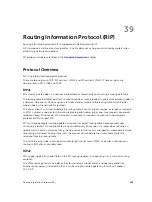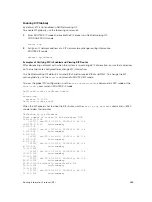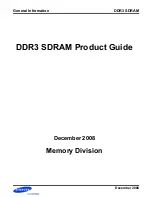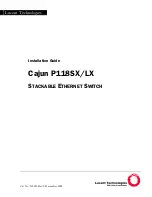
tail drops. Though ECN & WRED are independent technologies, BRCM has made WRED a mandatory for
ECN to work.
On ECN deployment, the non-ECN packets that are transmitted on the ECN-WRED enabled interface will
be considered as Green packets and will be subject to the early WRED drops. Typically the TCP-acks,
OAM, ICMP ping packets will be non-ECN in nature and it is not desirable for this packets getting WRED
dropped.
In such a condition, it is necessary that the switch is capable to take differentiated actions for ECN/Non-
ECN packets. After classifying packets to ECN/Non-ECN, marking ECN and Non-ECN packets to different
color packets is performed.
Policy based ingress QOS involves the following three steps to achieve QOS:
1.
Classification of incoming traffic.
2.
Specify the differentiated actions for different traffic class.
3.
Attach the policy-map to the interface.
Dell Networking OS support different types of match qualifiers to classify the incoming traffic.
Match qualifiers can be directly configured in the class-map command or it can be specified through one
or more ACL which in turn specifies the combination of match qualifiers.
Until Release 9.3(0.0), support is available for classifying traffic based on the 6-bit DSCP field of the IPv4
packet.
As a part of this feature, the 2-bit ECN field of the IPv4 packet will also be available to be configured as
one of the match qualifier. This way the entire 8-bit ToS field of the IPv4 header shall be used to classify
traffic.
The Dell Networking OS Release 9.3(0.0) supports the following QOS actions in the ingress policy based
QOS:
1.
Rate Policing
2.
Queuing
3.
Marking
For the L3 Routed packets, the DSCP marking is the only marking action supported in the software. As a
part of this feature, the additional marking action to set the “color” of the traffic will be provided.
Until Release 9.3(0.0), the software has the capability to qualify only on the 6-bit DSCP part of the ToS
field in IPv4 Header. You can now accept and process incoming packets based on the 2-bit ECN part of
the ToS field in addition to the DSCP categorization. The IPv4 ACLs (standard and Extended) are
enhanced to add this qualifier. This new keyword ‘ecn’ is present for all L3 ACL types (TCP/UDP/IP/ICMP)
at the level where the ‘DSCP’ qualifier is positioned in the current ACL commands.
Dell Networking OS supports the capability to contain DSCP and ECN classifiers simultaneously for the
same ACL entry.
You can use the ecn keyword with the ip access-list standard, ip access-list extended, seq, and permit
commands for standard and extended IPv4 ACLs to match incoming packets with the specified ECN
values.
678
Quality of Service (QoS)
Summary of Contents for Z9000
Page 1: ...Dell Configuration Guide for the Z9000 System 9 7 0 0 ...
Page 80: ...grub reboot 80 Management ...
Page 128: ... 0 Te 1 1 Te 1 2 rx Flow N A N A 128 Access Control Lists ACLs ...
Page 491: ...Figure 70 Configuring OSPF and BGP for MSDP Multicast Source Discovery Protocol MSDP 491 ...
Page 496: ...Figure 73 MSDP Default Peer Scenario 1 496 Multicast Source Discovery Protocol MSDP ...
Page 497: ...Figure 74 MSDP Default Peer Scenario 2 Multicast Source Discovery Protocol MSDP 497 ...
Page 498: ...Figure 75 MSDP Default Peer Scenario 3 498 Multicast Source Discovery Protocol MSDP ...
Page 760: ...Figure 100 Single and Double Tag TPID Match 760 Service Provider Bridging ...
Page 761: ...Figure 101 Single and Double Tag First byte TPID Match Service Provider Bridging 761 ...
















































